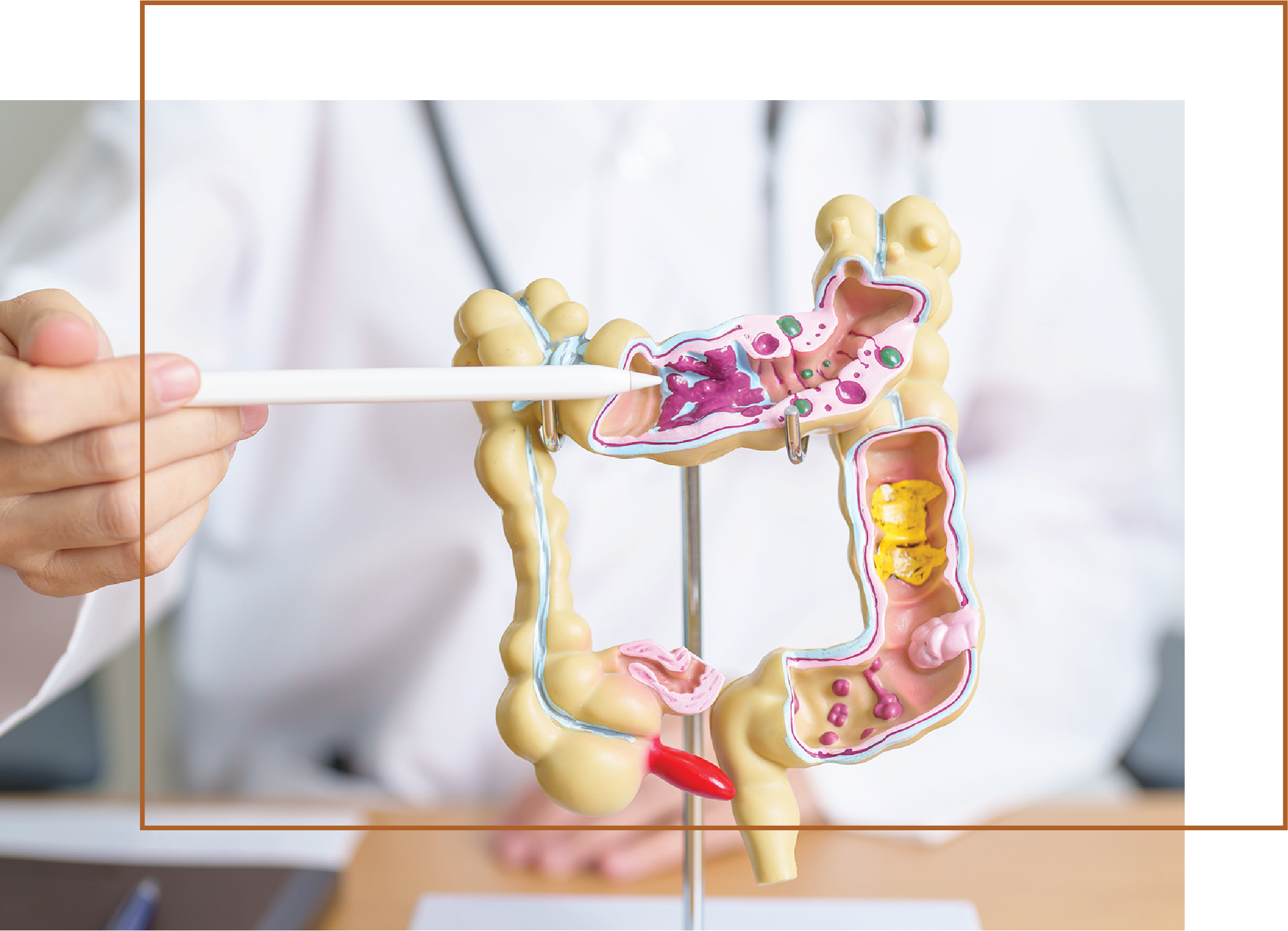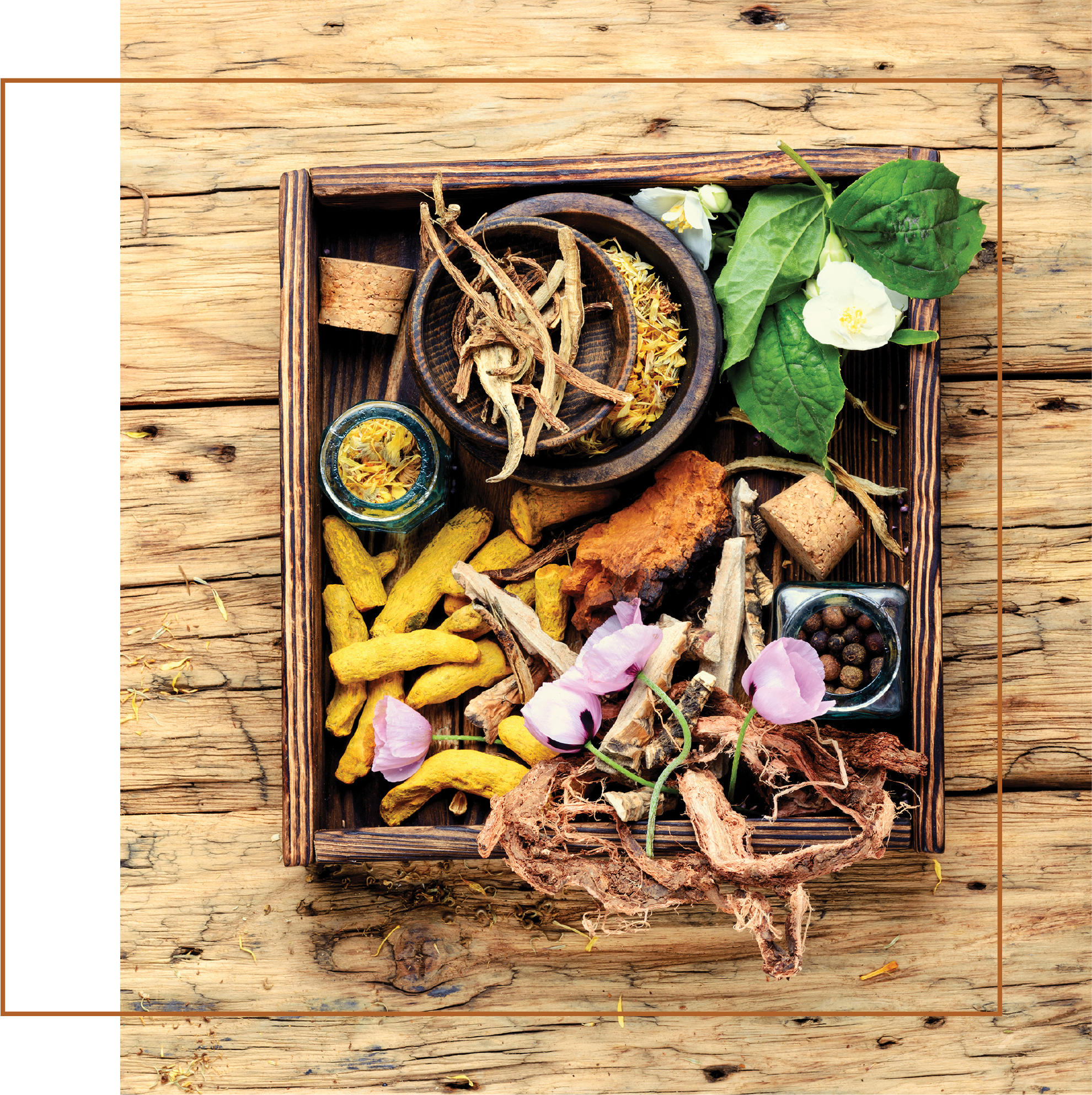Clear 1 µBiomic
Gut Motility Activation
A blend of herbs and extracts that promote and improve gut motility to support digestive functions and the elimination of waste and pathogens.
A blend of herbs and extracts that promote and improve gut motility to support digestive functions and the elimination of waste and pathogens.
Take 1 capsule on an empty stomach daily for 10 days, then repeat another 10 day cycle as necessary, or take as directed by your healthcare professional. We recommend combining Clear 1 μBiomic and Clear 2 μBiomic with a detox protocol to ensure that the body has the proper drainage in place to enhance the purging of undesired pathogens and toxins that come with them.
To achieve optimal results, Clear 1 μBiomic and Clear 2 μBiomic should be used together, followed by targeted re-feeding with μBiomic probiotics and Superfoods (prebiotics).
**Individual needs may vary; please consult your practitioner before altering the prescribed doses or protocols.

The migrating motor complex, often referred to as MMC, is a regular electrical activity pattern observed in the digestive system. This activity helps clean and maintain the small intestine between meals by triggering wave-like muscle contractions, known as peristaltic waves. These waves move food and waste out of the intestines. The MMC occurs every 90–230 minutes when you’re not eating but can be stimulated through specific dietary compounds.

A MMC plays a crucial role in clearing the digestive tract of harmful pathogens and parasites. These invaders enter the digestive system via contaminated food, water, or the environment and may initially attach to the intestinal lining. The MMC’s function is to dislodge and propel these pathogens out, preventing them from establishing a foothold in the gut. The MMC’s actions also result in a mixing and dilution of intestinal contents, reducing the concentration of pathogens and parasites, making it harder for them to thrive and reproduce. Simultaneously, the continuous peristaltic motion propels these microorganisms toward the colon and, eventually, the rectum, where they are eliminated in feces. This prevents colonic bacteria from flowing back into the small intestines, which can cause dysbiosis of the small intestine. Issues with the MMC can lead to an overgrowth of bacteria in the small intestine, commonly referred to as SIBO.
The gut is also equipped with an extensive immune system, including Peyer’s patches and specialized immune cells. Peristalsis helps transport pathogens and parasites toward these areas that are rich in immune cells, facilitating the body’s immune response to eliminate these invaders. In addition to these benefits, Clear 1 μBiomic also contains a plethora of potent antimicrobial compounds and digestive aids to directly help eliminate pathogenic bacteria, fungi, mold, yeast, parasites, and viruses.
As a 2-part system, Clear 1 µBiomic and Clear 2 µBiomic should be used together, followed by targeted re-feeding with µBiomic probiotics and Superfood prebiotics to achieve optimal results.
Efficient pathogen elimination provides numerous health benefits, including a reduced risk of infections, faster recovery from illnesses, and prevention of chronic conditions. This process optimizes the immune response, maintains microbial balance, and supports digestive health. By conserving energy and preventing secondary infections, efficient pathogen elimination enhances overall vitality and well-being. It plays a key role in respiratory health, aiding in the prevention and relief of conditions like colds or flu. Ultimately, these benefits extend to improved immune regulation, contributing to an individual’s overall health and quality of life.
The primary function of the MMC is to sweep undigested food, bacteria, unwanted pathogens and debris from the digestive tract. Correcting issues with the MMC ensures proper motility, preventing stagnation and promoting a healthy flow through the digestive system. Correcting MMC dysfunction can alleviate symptoms such as bloating, gas, abdominal discomfort, and other digestive disturbances associated with impaired gut motility. Dysfunctional MMC can result in slow transit through the digestive tract, contributing to constipation. Correcting MMC issues promotes regular bowel movements and helps prevent constipation.
Dysregulation of the MMC can contribute to conditions like Small Intestinal Bacterial Overgrowth (SIBO). Restoring proper MMC function helps prevent bacterial overgrowth in the small intestine, which can lead to various digestive symptoms such as bloating, gas, cramping, and diarrhea.
Supports a diverse and balanced gut microbiome. The intestinal microbiome plays a major role in overall health and imbalances in intestinal microbes can lead to dysbiosis and dysfunctional gut axes (gut-brain, gut-skin, gut-lung, gut-immune, gut-hormone, etc.). These axes rely on a balanced microbiome and healthy, functioning, undisturbed intestinal cells. Clear 1 µBiomic helps balance the microbiome and supports intestinal activity to fight off unwanted pathogens.
The MMC is particularly active during fasting periods between meals, which is why we recommend taking it on an empty stomach. Improving its function ensures effective cleansing and sweeping action during these fasting phases, contributing to overall digestive health.
The following describes the organisms eliminated through antimicrobial activity, migrating motor complex (MMC) correction, peristalsis, and the management of mechanical and digestive functions with ingredients used in Clear 1 μBiomic.
Parasites are organisms that thrive at the expense of their hosts, potentially causing a range of health issues. They can infect humans and animals, leading to conditions like gastrointestinal distress, fatigue, skin problems, respiratory symptoms, fever, muscle and joint pain, swelling, allergic reactions, nutritional deficiencies, neurological symptoms, liver and gallbladder problems, and cardiovascular symptoms. To maintain optimal health, it’s essential to eliminate parasites before they cause long-term damage.
Pathogenic bacteria can disrupt the balance of the gut microbiome, leading to digestive issues, inflammation, weakened immunity, and problems with nutrient absorption.
Fungus, yeast, and mold can be harmful as they may release harmful toxins and cause infections, allergies, respiratory issues, digestive discomfort, skin infections, and systemic infections. It’s important to eliminate pathogenic forms or any overgrowth before long-term health conditions can manifest.
Viruses can infect the intestinal cells that regulate immunity, causing a cascade of dysbiosis and health concerns related to the immune system.
Clear 1 µBiomic works to purge the body of unwanted pathogens and toxins by supporting a healthy migrating motor complex (MMC) and providing antipathogenic herbs and extracts.

Artichoke extract is derived from a plant belonging to the Asteraceae or daisy family. It holds historical significance as one of the earliest utilized medicinal plants, featured in ancient Egyptian drawings, and embraced by the ancient Greeks and Romans for its digestive support. It is particularly relevant for individuals with small intestinal bacterial overgrowth (SIBO), where excess bacteria in the small intestine can disrupt bile salt breakdown, leading to incomplete fat digestion and diarrhea. Artichoke extract contains compounds that stimulate bile production and support liver function, helping to alleviate SIBO. Additionally, it exhibits antimicrobial and antifungal activities against various strains, including Escherichia coli, Pseudomonas aeruginosa, Staphylococcus aureus, Aspergillus niger, Penicillium oxalicum, Mucor mucedo, and Cladosporium cucumerinum. Recognized for its clinical effects on digestive bowel functions, extensive biomedical herbal remedy research has verified antioxidant, choleretic, hepatoprotective, bile-enhancing, and lipid-lowering properties associated with artichoke extract.1
Black Walnut leaf has a positive impact on symptoms of diarrhea and the associated pain. Researchers propose that this extract could be a promising alternative to conventional gut motility drugs. The observed effects may be attributed to the presence of flavonoids and hydroxycinnamic acids in the extract.2 These compounds may also have antifungal effects against several pathogens, particularly Candida species.3
Bibhitaki, as part of the Triphala formulation in Ayurvedic medicine, has been shown to help with indigestion. Bibhitaki works by promoting the contraction of the intestinal muscles, enhancing peristalsis. It may also relieve diarrhea and help prevent ulcers. Modern research shows Bibhitaki to be a powerful adaptogen.4
Enriched with natural compounds recognized as astringents, quebracho bark offers advantageous effects on mucous membranes. These astringents contribute to alleviating gastrointestinal inflammation, irritable bowel, stomach ulcers, leaky gut, and diarrhea. Additionally, the polyphenolic compounds present in quebracho bark have been investigated for their antimicrobial properties, demonstrating activity against pathogens and aiding in the removal of detrimental microorganisms from the digestive system.5
A very potent natural seed that contains antibacterials, antimicrobials, antivirals, and antifungals, horse chestnut extract has one of the highest antioxidant scavenging abilities compared to other natural products. This can impact the intestinal lining by reducing inflammation and other antioxidant pathways, helping the body to utilize its own innate system to eliminate pathogens more efficiently.6
Barberry contains compounds with numerous properties, including heart support, insulin moderation, weight regulation, and liver-supportive phytochemicals. Berberine, the main compound in barberry with antimicrobial and anti-inflammatory properties, stimulates bile secretion. This can influence digestion and bowel movements, supporting the destruction and elimination of pathogens while aiding digestion.7
Quassia amara is being considered for the development of new drugs to treat gastric ulcers due to its potent healing effects on the gastric lining. Its therapeutic mechanism involves promoting mucous production and enhancing prostaglandins, crucial factors in protecting the stomach lining and aiding in the prevention and healing of ulcers.8 Additionally, extracts from Quassia amara have demonstrated antimicrobial activity against various pathogenic microbes, including Staphylococcus aureus, Escherichia coli, Pseudomonas aeruginosa, Klebsiella pneumonia, and Candida albicans.9
Stemona species are primarily used for their potent antimicrobial properties, particularly in combating parasites. Furthermore, the roots of Stemona species have been documented to exhibit diverse biological activities, including anti-inflammatory, antitumor, and antiviral effects.10,11
Yarrow modulates the MMC through its many phytochemicals, mainly flavonoids. Additionally, yarrow has a plethora of compounds with antimicrobial activity against various microorganisms, especially certain types of bacteria, fungi, and protozoa. This makes it a very potent ingredient for correcting the gastrointestinal system and purging pathogens.12
Artemisia and artemisinin have been studied for their antimicrobial properties, particularly against certain parasites and microbes. Artemisinin is most well-known for its efficacy against Plasmodium species, the causative agents of malaria. Beyond its antimicrobial uses, artemisinin is being investigated for potential anticancer, anti-inflammatory, immunomodulatory effects, and neuroprotective properties.13–15
Various parts of the plant have been explored for antioxidant, antidiarrheal, and antiparasitic activities. Its use as an antimicrobial is quite useful, helping support a healthy digestive tract that facilitates a well-functioning MMC and peristalsis to purge unwanted pathogens.16,17
Possesses various therapeutic activities like anti-inflammatory, analgesic, antiallergic, antifungal, antidiabetic, antibacterial, antiulcer, immunostimulating, anticancer, antioxidant, antiamoebic, antidermatophytic and many more. In this formula, we are using it as an effective amoebicide against many different species of amoeba parasites, which can cause complications such as granulomatous amoebic encephalitis and amoebic keratitis, in addition to its other antimicrobial properties.18,19
A potent tonic MMC and digestive system, catechu has been shown to provide beneficial effects for patients with diarrhea through spasmolytic and antispastic activities, resulting in a reduction of diarrhea by 20-40 percent.20
For thousands of years, dried jujube fruits have been used in China as food and flavoring due to their high nutritional value. They are particularly known for improving digestion and supporting overall health because they contain a plethora of healthy phytochemicals. Jujube fruit extract has been found effective in healing the gut lining by reducing exposure to harmful substances. Additionally, it has been shown to improve fatigue, loose stools, and symptoms of anorexia.21
Prickly ash is used for its benefit to the MMC and gut healing properties, while also containing phytochemicals that act as antimicrobials.22,23
Pulsatilla has historically been associated with potential antimicrobial properties, with studies showing it exhibits strong antibacterial, antifungal, and antiviral activities.24,25
Teasel contains bioactive compounds that have been studied for their ability to combat various bacteria and yeasts, as well as provide antioxidant effects.26
Do not take while pregnant or breastfeeding.
**It is always recommended that you consult your practitioner prior to adding any new supplement to your regimen if you are pregnant, breastfeeding, experiencing renal failure, undergoing an organ transplant(s), managing diabetes with insulin, or are taking medication(s) for any pre-existing conditions**
All ingredients are tested before use for: